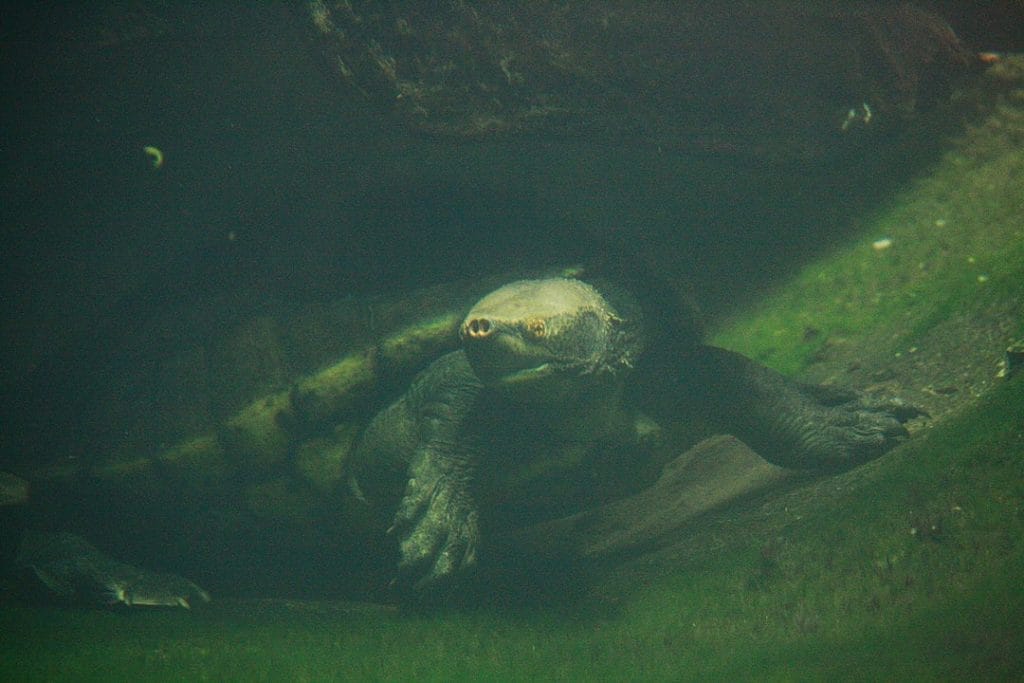Dermatemys mawii (Central American River Turtle)
Home > Turtle Database > Dermatemys mawii (Central American River Turtle)

Dermatemys mawii, commonly known as the Central American river turtle, is a critically endangered freshwater species native to Central America. It is one of the few fully aquatic turtles in the region and is known for its nocturnal habits, making it unique among turtles in its environment.
Native Turtle Species Map – Find Turtles by Region
Scientific Classification
- Kingdom: Animalia
- Phylum: Chordata
- Class: Reptilia
- Order: Testudines
- Family: Dermatemydidae
- Genus: Dermatemys
- Species: Dermatemys mawii
Common Names
- Central American River Turtle
- Hickatee
- Tortuga Blanca
This Hilarious Turtle Book Might Know Your Pet Better Than You Do
Let’s be real—most turtle care guides feel like reading a textbook written by a sleep-deprived zookeeper.
This one’s not that.
Told from the snarky point of view of a grumpy, judgmental turtle, 21 Turtle Truths You’ll Never Read in a Care Guide is packed with sarcasm, sass, and surprisingly useful insights.
And hey—you don’t have to commit to the whole thing just yet.
Grab 2 free truths from the ebook and get a taste of what your turtle really thinks about your setup, your food choices, and that weird plastic palm tree.
It’s funny, it’s honest, and if you’ve ever owned a turtle who glares at you like you’re the problem—you’ll feel seen.
Identification
Description:
Dermatemys mawii is a large, aquatic turtle with a streamlined shell. Its carapace is smooth and olive to dark brown in color, while its plastron is pale yellowish-white. Adults can reach a length of up to 65 cm (26 in) and weigh as much as 22 kg (48 lbs).
Sexual Dimorphism:
Males and females differ mainly in their tails. Males have longer, thicker tails, while females have shorter, thinner ones. Males also develop a concave plastron as they mature.
Native Origin and Distribution
Geographical Range:
This species is native to the river systems of Belize, Guatemala, and southern Mexico, particularly the Usumacinta and Belize River basins.
Preferred Habitat
Dermatemys mawii inhabits slow-moving rivers, lagoons, and swamps with dense vegetation. It is a fully aquatic species that rarely leaves the water, preferring deeper sections of rivers with muddy or sandy bottoms.
Behavior
Feeding Habits:
Dermatemys mawii is primarily herbivorous, feeding on aquatic plants, fruits, and leaves. It forages during the night, making it a nocturnal feeder.
Predators:
The primary natural predators of this turtle include large fish, crocodiles, and humans. The species is heavily hunted for its meat.
Reproduction
Breeding Season:
The breeding season typically occurs between the end of the rainy season and the start of the dry season, from September to December.
Reproductive Method:
Females lay 6-20 eggs in sandy riverbanks. The eggs incubate for approximately 60 to 90 days, depending on environmental conditions.
Conservation
Extinction Status:
Critically Endangered (IUCN Red List)
Threats:
Major threats include overharvesting for its meat, habitat destruction due to deforestation and river pollution, and illegal trade.
Conservation Measures:
Efforts to conserve this species include legal protection in Belize and Guatemala, the establishment of breeding programs, and conservation education initiatives to reduce hunting pressure.
Economic Importance
The Central American river turtle has historically been an important food source in local communities. However, overexploitation has drastically reduced populations, and it is now illegal to hunt the species in many areas.
Interesting Facts
- Dermatemys mawii is one of the last remaining species in its family, making it an evolutionary relic.
- The species is fully aquatic and does not bask on land like many other turtles.
- It is sometimes referred to as “the turtle that never leaves the water” because of its aquatic nature.

About Author
Muntaseer Rahman started keeping pet turtles back in 2013. He also owns the largest Turtle & Tortoise Facebook community in Bangladesh. These days he is mostly active on Facebook.











